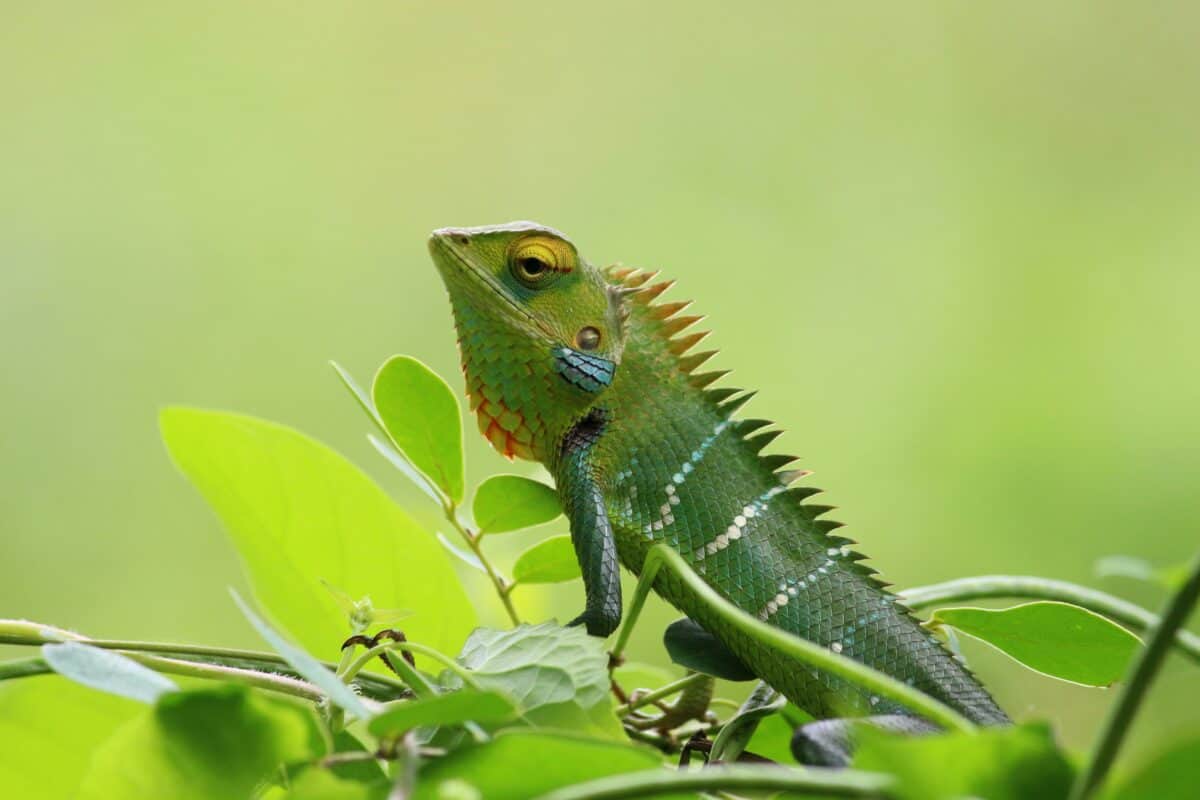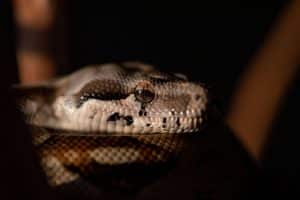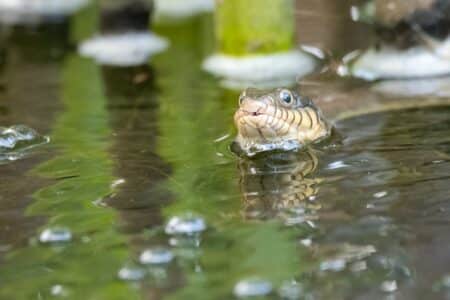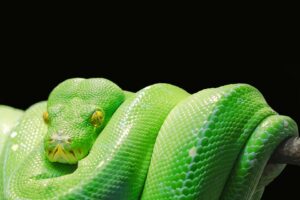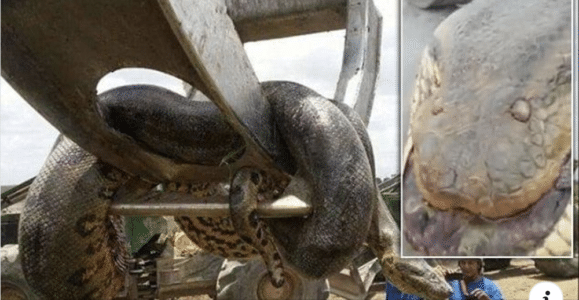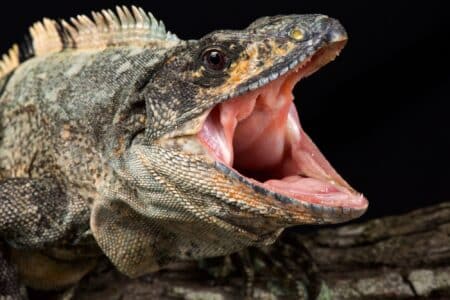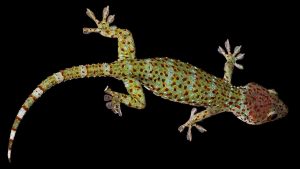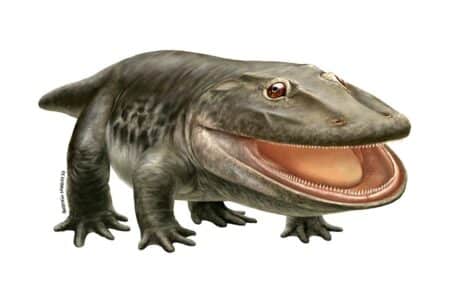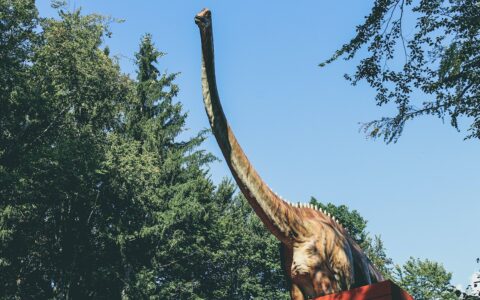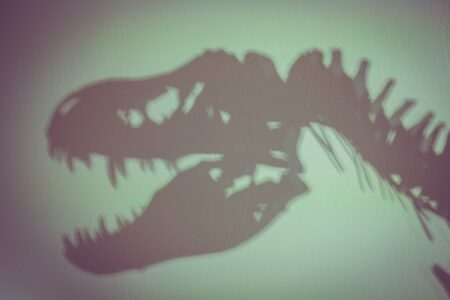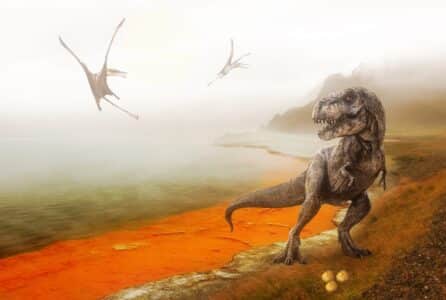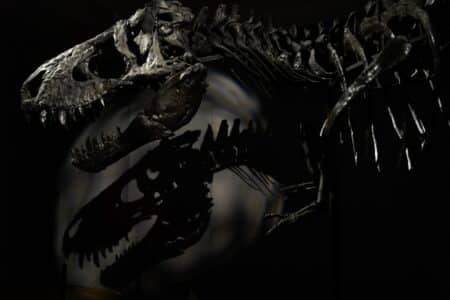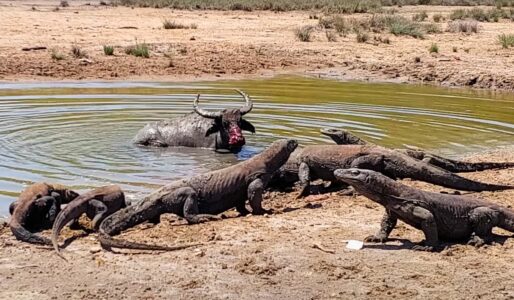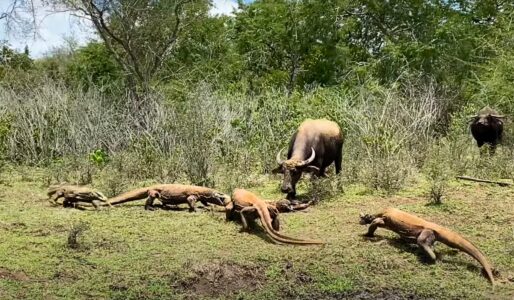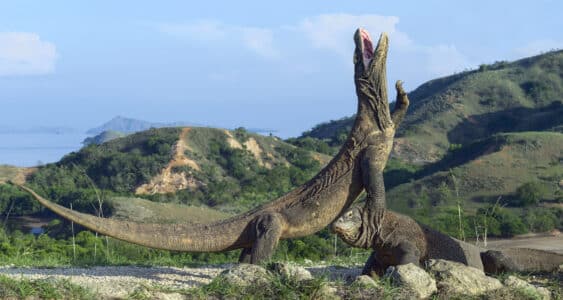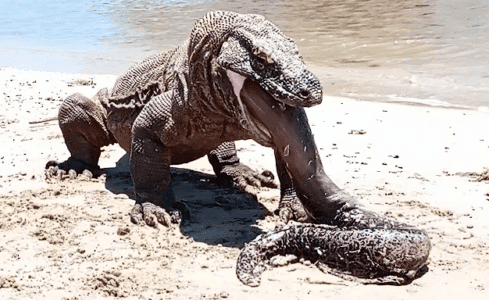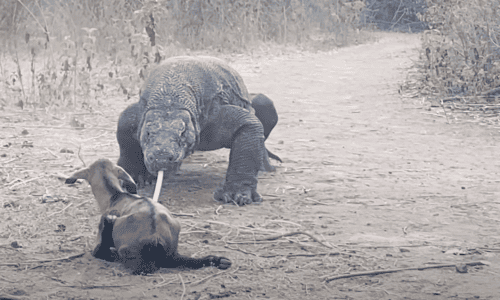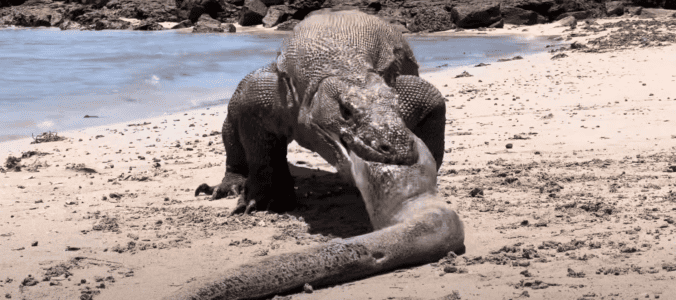Reptiles are fascinating creatures that have captivated many people’s attention due to their peculiar and often dragon-like appearances. Many reptiles have even made their way into our homes as beloved pets.
We like reptiles, so follow along as we dive into their unique worlds, or skip ahead to any section!
Introduction
Reptiles are widespread and can be found on every continent except Antarctica. There are approximately 12,000 living species worldwide; however, over 20% of those are threatened with extinction, according to the IUCN Red List.
Reptile Characteristics
First, reptiles include all animals in the class Reptilia, including lizards, turtles, snakes, and crocodiles. Next, reptiles have cold-blooded metabolisms, meaning they do not have internal body heat to keep them warm, like humans do, but instead rely on an outside source of heat, like the sun. Finally, most reptiles lay eggs, rather than give live birth like mammals.
Smallest vs. Largest Living Reptiles
| Scientific name | Body size | Habitat range | Diet | Conservation status | |
| Saltwater crocodile | Crocodylus porosus | 2,200–3,300 lb (1,000–1,500 kg); 20 ft (6 m) | Southeast Asia to northern Australia | Small to medium-sized mammals, reptiles, fish, birds, amphibians | Least concern |
| Nano-chameleon | Brookesia nana | 0.87–1.1 in (22–29 mm) | Northern Madagascar | Mites, springtails | Data deficient |
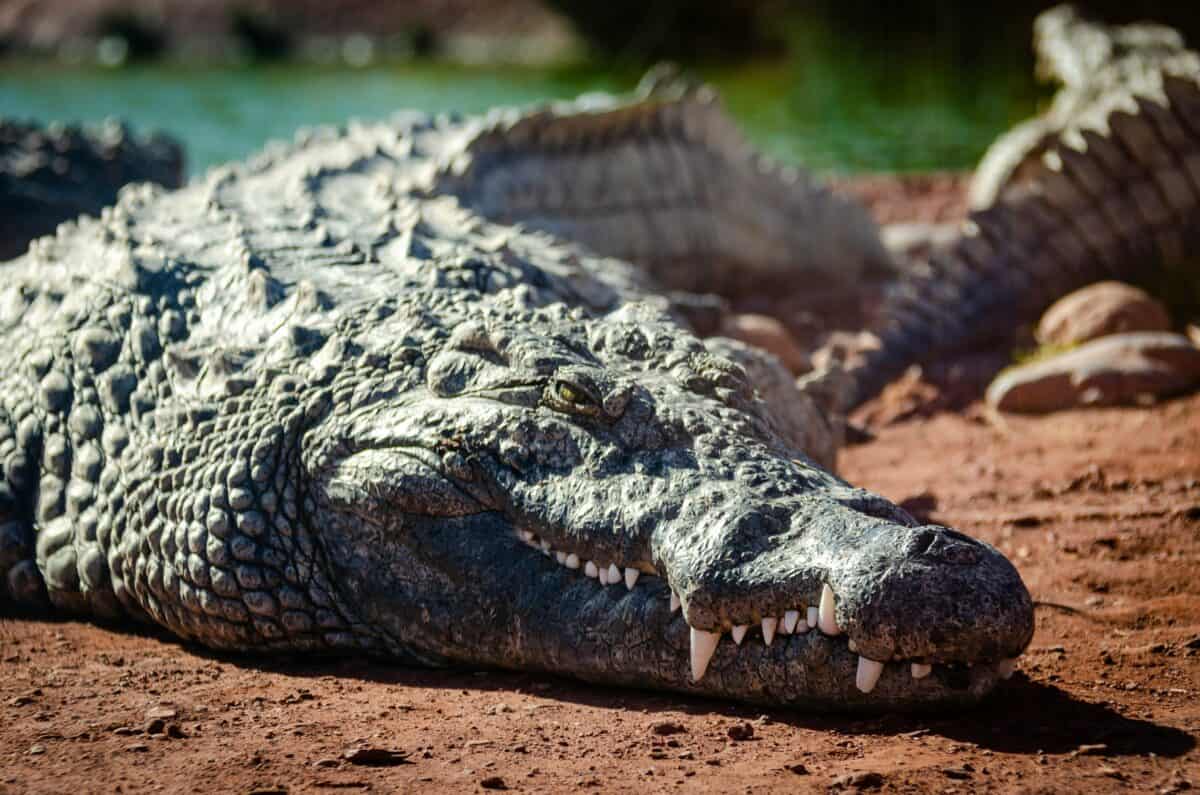
Image by Maren Pauly via Unsplash
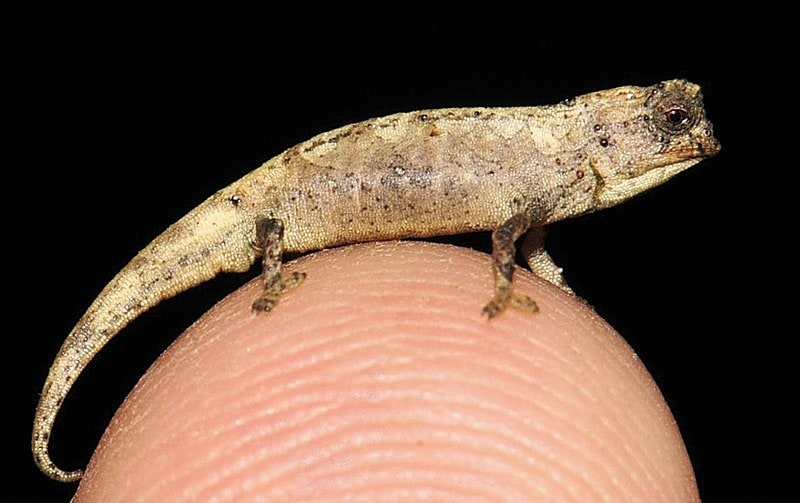
Frank Glaw et al., CC BY 4.0, via Wikimedia Commons
Types of Reptiles
Snakes
Snakes are limbless reptiles of the suborder Serpentes. These creatures are often seen as dangerous, but they are misunderstood – with less than 7% being of any real threat to humans.
If you’d like to find out more about the different kinds of snakes, as well as their symbolism throughout history, visit our dedicated snake page!
Lizards
Lizards include many scaly reptiles with limbs and moveable eyelids, such as iguanas, geckos, skinks, and chameleons, among others. Many species of lizards have impressive adaptations, like the Jesus Lizard that got its name from its ability to run on water.
If you’d like to find out more about lizards and their cool characteristics, visit our dedicated lizard page!
Dinosaurs
Dinosaurs are an extinct clade of reptiles. For around 140 million years, they were the apex predators on Earth, until several cataclysmic events wiped them all out. Some modern-day animals evolved from dinosaur species, including birds and tuataras.
If you’d like to find out more about the different types of dinosaurs, as well as their extinction, visit our dedicated dinosaur page!
Monitor Lizards
Monitor Lizards are an impressive reptile group belonging to the Varandiae family and have about 80 recognized species. They are all characterized by their powerful and long necks, claws, tails, and fully-developed limbs.
If you would like to learn more about the different monitor lizards, including the Komodo Dragon, visit our dedicated monitor lizard page!
-

Buffalo Vs. An Army of Komodo Dragons
-

Mother Buffalo Tries to Save Baby From Komodo Dragons
-

Watch: The Biggest Komodo Dragon Ever Recorded Here (more than 10 feet long)
-

Watch: Komodo Dragon Defeated By Moray Eel
-

Watch: Komodo Dragon Swallows Baby Goat In Seconds
-

Watch: Komodo Dragon Devours Massive Moray Eel
Comparison of Five Different Reptiles
| Scientific name | Habitat range | Diet | Unique characteristics | |
| Snake | Suborder Serpentes | Everywhere except Antarctica and some islands | Carnivores | Limbless; many venomous |
| Lizard | Order Squamata | Everywhere except Antarctica | Mostly insectivores | Four limbs; long tails; rounded torsos |
| Turtle | Order Testudines | Worldwide continents, oceans, islands | Omnivores, some carnivores, others herbivores | Water-dwelling; thin, streamline shells |
| Tortoise | Family Testudinidae | Everywhere except Antarctica and Australasia | Herbivores | Land-dwelling; round, dome shells |
| Crocodile | Family Crocodylidae | Tropical Africa, Asia, Americas, Australia | Carnivores | Water-dwelling; webbed feet; large streamlined bodies |
Keeping Reptiles as Pets
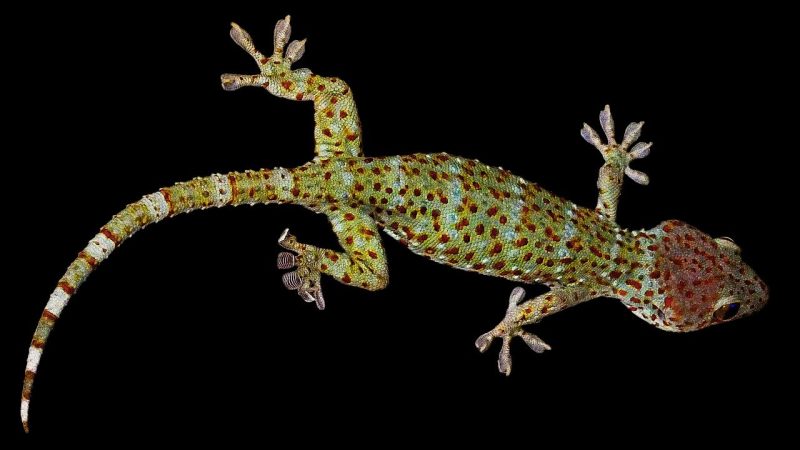
Reptile FAQs
Not all reptiles lay eggs. There are a few species, including Jackson’s chameleons and garter snakes, that carry their young in eggs that develop inside their bodies, but the eggs hatch inside the mother and the young are born “live.” This mode of reproduction is known as ovovivipary.
Cold-blooded animals are known as ectotherms. Warm-blooded animals have warm body temperatures because when their body breaks down the food they have eaten for energy (metabolism), heat is produced. Cold-blooded animals lack the mechanism that releases heat during their metabolism, so they rely on environmental heat sources.
All animals shed their skin. Reptiles are unique in that they shed all their skin in one go, unlike mammals who constantly shed their skin in flakes. Depending on the reptile, shedding can happen several times a year. Shedding allows reptiles to outgrow their old skin, gets rid of any mites and bacteria that might live on the skin, and it throws off their scent from predators.
All reptiles, even water-dwelling reptiles, breathe using their lungs in a similar way that mammals do. Amphibians and fish, in contrast, breathe using gills.
Newest Category: Reptiles
- Flamingos Are Totally Hardcore - April 23, 2024
- Lion Stalks Buffalo Herd - April 11, 2024
- Watch: All About Elite Military Dogs - April 4, 2024

